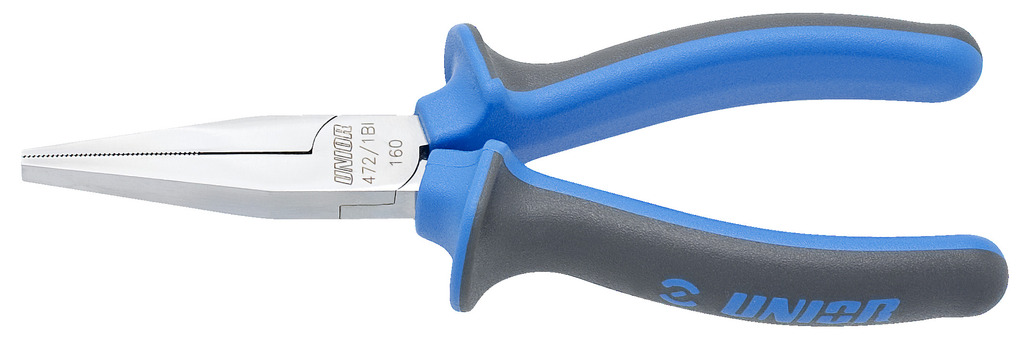Purchasing jewelry, even if it is only costume jewelry, can be quite costly. Crafting handmade jewelry, on the other hand, can mean much more than just making nice pieces of jewelry at a lower cost; you can also make jewelry that closely matches your style and taste.
Making your jewelry is not only a fun and addictive hobby, but it also has the added benefit that you get to wear what you create! However, you will need the best tools for jewelry making.
One of the most difficult aspects of learning a new craft, such as jewelry making, is determining what supplies you’ll need to get started. Tools like wire cutters and various shapes of pliers are useful for having on hand when stringing beads, bead weaving, or doing wirework.
The majority of them are available at craft stores, online retailers, and even hardware stores. But, before you spend your paycheck on your new hobby, consider the necessity of each tool. This article will serve as a perfect guide for you on the best tools for jewelry making.
Why Use Jewellery Making Tools?
Having your tools is an indispensable part of jewelry making. It may be sufficient to “borrow” the wire cutters and pliers from your household toolbox for your first attempt.
However, the reality is that the better the tools you have to work with, the easier the process will be, and the better the outcome of your project will be. It may appear to be an investment at first, especially when it comes to specialty tools like metal stamps, but they more than pay for themselves in the long run.
When you’re able to create rather than buy your jewelry, as well as make jewelry to give as gifts and/or sell to others. Once you have the tools, making any piece is usually very inexpensive. It’s important, however, that you select the best tools for jewelry making.
You Can Check Out; Best Jewelry Making Classes Online in 2022 | Free & Paid
Important Features to Look Out For When Buying The Best Tools For Jewellery Making
There are 3 features we always recommend customers to look out for when purchasing tools for jewelry making:
1. Cushioned Hand Grips:
Cushioned hand grips are foam coverings on the handles of tools of all types (pliers, cutters, etc.). When you squeeze the handles together, the cushioned hand grips give a little, giving you more movement and flexibility as you use the tool.
They are also more comfortable. You’ll be glad you had cushioned hand grips when you make a lot of beaded jewelry.
2. Spring Mechanism Between the Handles:
After you release your handgrips, the spring mechanism allows the tool jaws to spring back open. This is preferable to manually spreading the handgrips open when your hands are full of the jewelry piece you’re working on.
The spring open action is a minor detail, but you will notice its absence in a situation where it’s not available in your tools.
See Also: Online Resources To Learn Polymer Clay Jewelry Making | Free & Paid
3. Smooth Jaws in Pliers:
The pliers you buy must have smooth jaws. Little grooves inside the jaws of the needle-nose pliers will press into your earrings wires, earrings hooks, and jump rings and damage or scratch the metal finish off your finished jewelry piece.
Don’t Fail to Read: 10 Almost Free Marketing Tools for Beginners in 2022
What Kind of Jewellery Will I be Able to Make with The Best Tools For Jewellery Making?
The tools we’ll go over here will enable you to make simple earrings, bracelets, and necklaces. You’ll be able to attach earrings to hooks, and put clasps on bracelets and necklaces.
How many jewelry pieces you can make with the amazing tools will leave you shocked?
That is assuming you have the best tools for jewelry making.
See Also: 15 Craft Classes Online In 2022 | Free & Paid
Overview of The Best Tools For Jewellery Making
Once you’ve got the best tools for jewelry making, the possibilities are endless for creating unique handmade jewelry! These best tools for jewelry making are useful both for experts with ample level of experience in the field as well as beginners just starting in the path of Jewellery making.
While they may vary in size, shape, and qualities, they all serve one purpose; to give you the best jewelry of your dreams. Here are ten of them:
- #1. Wire Cutters.
- #2. Round Nose Pliers.
- #3. Chain Nose Pliers.
- #4. Flat Nose Pliers.
- #5. Crimping Tools.
- #6. Nylon Tipped Pliers.
- #7. Jewellery Making Wire.
- #8. Jeweler’s Saw.
- #9. Disk Punch/Cutter.
- 10. Jewellery Making Hammers.
Don’t Fail to Read; How To Start A Jewelry Business In 2022: The Ultimate Guide, Step-By-Step
Best Tools For Jewellery Making in 2022
Here is the list of the best tools for jewelry making anyone interested in making their jewelry should have.
#1. Wire Cutters

If you don’t have the tools to cut the wire, it’s useless then to think of jewelry making. Also, make sure your wire cutters are of sufficient quality – many wire cutters sold online or in stores are quite flimsy and break easily, especially when used on thicker wires.
If you want to turn jewelry-making into a full-time hobby, or even something more, invest in a good set of wire cutters. The key to getting wire-cutters for jewelry making is that they must be flush cutters.
The flush cutter’s design is in such a way that the areas they cut will sit flush. If your cutter isn’t flush-cutter when you cut the wire, there will be a sharp wire tail that sticks out and scratches the person who eventually wears your bracelet or necklace. This is not a favorable situation for you. Which you can avoid by making sure you get flush cutters.
The jewelry-making tasks for flush wires include:
- Cutting beading wire to make necklaces and bracelets.
- Cutting earrings wire when making beaded earrings.
The wire cutters are one of the best tools for jewelry making. It’s a must-have for anyone intending to start making their jewelry.
Don’t Fail to Read; 10 Most Expensive Jewelry in the World in 2022
#2. Round Nose Pliers

Round nose pliers are rarely found in Dad’s toolbox because they are only used for jewelry making. The round edges make it easy to make simple loops and other rounded wire elements. Round nose pliers have tapered jaws that allow you to position your wire along the jaw to get the exact size loop you want. Place your wire closer to the handles for a larger loop; closer to the tip for a smaller loop.
Mark the pliers with a permanent marker to make consistent-sized loops for a specific project. This way, your wire will always be in the same place. Simply clean the pliers with alcohol once you’re finished to remove the mark.
Round nose pliers as one of the best tools for jewelry making are a must-have for all jewelry makers. This is the case for both professionals and amateurs alike.
You mustn’t confuse looping pliers with the round nose pliers. This is because both seem almost identical. The only difference between them is that the looping plier tips are not cone-shaped like the round nose player tips. That is a point you should look out for when purchasing your round-nose pliers to avoid getting cheated off your money.
Check Out; 20 Cutest Gift Ideas For Girlfriend
#3. Chain Nose Pliers
You could be duped into using needle-nose pliers instead of chain-nose pliers. And in some cases, they may work perfectly well. The flat-jawed chain nose pliers, on the other hand, have a flat surface (as opposed to the serrated surface of the needle nose), which is ideal for gripping jewelry wire without leaving marks or ridges.
Chain nose pliers have shorter jaws than needle-nose pliers, making them easier to work with. Chain nose pliers, which taper towards the tip and can be easily manipulated into small spaces, can be used to open and close jump rings. They are available in both standard and needle-nose styles.
Not only that they are also found in the form of a bent chain nose plier, which is frequently used to grip and manipulate wires. These pliers enable the crafter to grasp the wire at various angles, making it easier to work with. These pliers are great for not only jewelry making but also other crafts that require working with wire.
See also: 10 Best Free Wireframe Tools in 2022 | Do a Sketch in realtime
#4. Flat Nose Pliers

These tools will likely be the ones you use the most. It has a variety of functions which includes:
- Flattening crimp beads, are an essential part of putting clasps on necklaces and bracelets.
- Opening and closing jump rings( connectors for clasps, charms, and more).
- Opening and closing earning hook loops to attach dangles or drops.
- Holding the jewelry elements in place as you work on them.
When purchasing your flat nose pliers, you must get one with smooth jaws. The flat nose pliers have two basic types, the wide and needle nose. The wide nose just as the name sounds is wide, while the needle’s nose pliers have a pointed tip.
The needle nose flat nose pliers are more widely used and accepted by most jewelry makers. This is due to its special crimping ability to put clasps on necklaces and bracelets by smashing crimp beads, and small soft metal tubes, into your beading wire after looping the wire through your clasps.
There are special crimping tools for this step, but if you are just getting started in jewelry making the needle-nose flat nose pliers can also accomplish this. The Flat nose pliers are one of the best tools for jewelry making and are an indispensable part of all jeweler’s toolboxes.
#5. Crimping Tools

On projects where the wire shows between beaded segments, some jewelry makers use flat nose or chain nose pliers to smash a crimp bead into place.
However, this is not a recommended method because smashing the metal produces an unsightly sharp edge that can cut sensitive skin.
Enter the crimping tool, also known as crimping pliers, which have special notches in the jaws for slightly flattening and rounding a crimp bead onto the wire.
You can crimp with one notch and then shape the bread into a round with a larger notch near the end of the pliers.
This tool’s other function is to secure a clasp at the end of a project. The crimping tool is one of the best tools for jewelry making. It’s mostly used by professionals already well adept in the process of making jewelry.
#6. Nylon Tipped Pliers

Nylon tipped pliers are especially useful for beginning jewelers, but they are also popular with seasoned craftspeople.
The main advantage of using nylon-tipped pliers is that they help reduce the amount of damage you can do to the wires, metals, and other materials you’re working with.
You will not accidentally dent or cut your wires. They are particularly useful for safely bending or straightening wires without damaging them.
The nylon jaws of this plier protect the surface finish of wire or other materials handled with it. There will be no more rebuffing or refinishing of surfaces after forming. These pliers’ features include polished stainless steel and feature a box-joint design for added leverage.
Whether you are a beginner or make a living from your jewelry designs, we are confident that you will find this tool indispensable.
#7. Jewellery Making Wire

Wires are available in a variety of types, materials, and thicknesses. They are also the foundation of artisan jewelry, so you’ll need either the exact type of wire for the project at hand or a collection of the most common jewelry wires.
Copper, aluminum, rose and yellow gold, sterling silver, and gold-filled wires are among the most commonly used materials for jewelry wires.
The wire size is also important – wire sizes measurement is in gauges, and, much to the chagrin of many beginners, the larger the gauge number of a wire used, the thinner the wire.
- 28- and 30-gauge wires are extremely thin and designed for small precious stone beads with tiny holes.
- 26-gauge wires are thin but strong, providing the ideal balance.
- 24-gauge wires are designed specifically for jewelry pieces that require strength and stability, as well as beads with larger holes.
Jewelry making wire is one of the best tools for jewelry making. It’s almost impossible for anyone to proceed with making jewelry without the jewelry-making wire. It’s considered the heart of jewelry making and without it, the process of making jewelry can’t happen. This is a must-have tool for all jewelry makers.
#8. Jeweler’s Saw

This tool is invaluable for smaller designs with numerous intricate cuts. This will allow you to easily create the finest details and create truly spectacular jewelry pieces.
A good jeweler’s saw has blades in a variety of sizes, ranging from incredibly small blades that can barely part the metal to larger and stronger blades that can remove large chunks of metal at once.
There are also blade frames with deeper throat depths, which are ideal for longer cuts on long metal pieces or larger jewelry pieces.
Smaller blade frames, on the other hand, are much easier to control and are better for achieving finer details.
If you only want to try your hand at making a specific jewelry piece and have no plans for a long-term hobby or career, you can simply purchase a jeweler saw with a blade size that meets your current requirements.
If you have larger plans for your jewelry-making practice, it is worthwhile to invest in a saw with a variety of blade sizes.
You must use a lubricant when you’re working with the saw to avoid accidents and to reduce the risk of breaking the blade. This is one of the best tools for jewelry making. It’s a must-have for all jewelry makers both amateurs and professionals.
#9. Disk Punch/Cutter

A disk punch is an absolute requirement if you want to produce identical shapes such as squares, hearts, circles, and others.
This tool allows you to sandwich sheets of metal between the punch’s two layers, insert the desired shape template, and hammer out a disk in that exact shape.
This makes the disk punch very useful if you want to sell your handmade jewelry because it allows you to make multiple copies of the same piece.
To make precise cuts Use the metal as is with a disk cutter. Don’t anneal it; annealing is a technique that involves heating metal to soften it. Instead of making a clean cut, a disk cutter will distort the edges of annealed metal.
Clean up any burs left on the edges of the disks with a hand file or coarse-grit sandpaper. The disk cutter is one of the best tools for jewelry making, and also a must-have for all professional jewelry makers.
#10. Jewelry Making Hammers

A jeweler’s best friend is the jewelry-making hammer. People develop strong attachments to their favorite hammers for good reason! The hammer functions as an extension of your arm. Various hammers can flatten, shape, stretch, thin, or dome your metal; control the edges of your piece with a soft or hard edge; and texture your piece, to name a few.
There are a lot of jewelry hammers out there, so to straighten up the confusion, we’ll break it down for you.
- Planishing: This is the most important type of hammer. This hammer smooths your metal by using overlapping hammer strikes. It has two faces: the flat face smooths the metal and the round face shapes it.
- Rawhide and Nylon: You must have one of these! When you don’t want to leave a mark on your piece but still need to smooth or move it, these are the hammers to have on hand.
- Raising Hammers: Raising hammers are of two types: cross and ball pein. These hammers move the metal sheet a lot!
- Embossing: Shape the piece by hammering from the inside (fluting) or the front of your piece (embossing), creating a relief.
- Chasing: The act of hitting the top of a chasing tool. When using a chasing tool to carve or design in metal, you want to be able to concentrate on the metal piece and the tooltip rather than worrying about your hammer striking the tools. Because of this, the faces on these hammers are large.
- Texturing: These hammers are a lot of fun! Texturing hammers are useful for creating repetitive patterns on metal. You can even carve designs into the face of a chasing hammer to make your texturing hammer.
Keep your arm straight by your side when hammering, move the elbow up and down, use your entire arm, and stand if possible for more powerful blows.
Your strikes will be more controlled if you can move your metal rather than the hammer. The chasing hammer is an exception to this rule. Chasing hammers are used quickly and with light strikes. Make sure to use your wrist rather than your arm; this is why it has a curved handle for a better grip.
It’s important to have control over your hammers. Since weight, grip, and size can alter between hammers, you should always practice after getting a new hammer. The hammer is one of the best tools for jewelry making and is a must-have for all jewelry makers.
Frequently Asked Questions
Starting a hobby and learning new skills can be intimidating, but making jewelry does not have to be. Making jewelry necessitates a basic understanding of industry jargon. Understanding the best tools for jewelry making and components will simplify the design process and set you up for success.
While there are numerous metals to choose from, jewelry is typically made of precious, high-luster metals such as platinum, gold, and silver. Several non-precious metals are becoming popular in contemporary jewelry for reasons ranging from durability to uniqueness.
Tungsten is the most durable and strong jewelry material. While titanium, stainless steel, and cobalt are all extremely strong and durable metals, tungsten is approximately 10 times harder than 18K gold and 4 times harder than titanium.
A person who makes, repairs, or sells jewelry as a profession is called a jeweler, goldsmith, horologist, and lapidary.
When combining metals, layer different jewelry pieces on top of each other or very close together—for example, multiple necklaces around your neck or a few rings on your fingers. Experiment with various combinations to find the most fashionable look.
Conclusion
This is not an exhaustive list, but it’s an excellent list of the best tools for jewelry making to get your project underway and set you on the path to becoming an excellent artisan jewelry maker. As you go further into your craft, you can keep adding other tools that will be necessary for continuous development.
See Also: 20 best free video-making tools for beginners in 2022
References
- craftsy.com -Jewelry making tools.
- thesprucecrafts.com -Basic Jewelry making tools.
- jewelryshoppingguide.com -List of Jewelry making tools.
- amazon.com -Jewelry making tools.
- Image link






